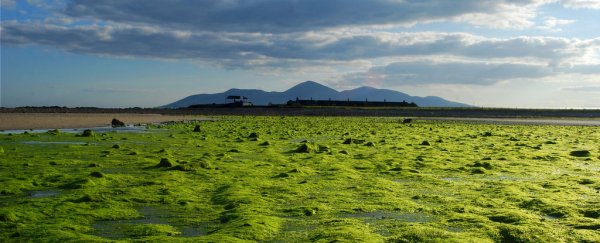It's probably fair to say that for lots of people reading this, seaweed isn't a regular staple of their diet. While it's consumed around the world in many coastal cities and particularly in Asian cuisine, many of us wouldn't ordinarily come across seaweed in food except when it's used to wrap up sushi rolls or flavour rice crackers.
But we should change this, according to a team of Danish researchers who advocate that people should be eating seaweed daily to make their meals healthier – and to help reduce the impact of obesity and the conditions that stem from it.
"Certain substances in seaweed may be important for reducing cardiovascular diseases," said Ole G. Mouritsen, a biophysics researcher at the University of Southern Denmark. "We think this knowledge should be available for society and also be put to use."
In a new study published in Phycologia, Mouritsen and his colleagues say incorporating seaweed into our diets shouldn't just be left to the consumer, suggesting that the food industry has a big role to play in making seaweed a common ingredient in the foodstuffs we buy and consume every day.
All manner of processed foods could incorporate small amounts of seaweed as an alternative ingredient or flavouring, the researchers suggest, including frozen pizzas, hot dogs, dried pasta, and even fast food.
In the new paper the researchers examine the dietary profile of 35 different species of seaweed, many of which confer a variety of health benefits. Seaweed is high in a number of healthy nutrients including essential amino acids, antioxidants, minerals, trace elements, dietary fibre and polyunsaturated fatty acids.
It's also good for flavouring, with its potassium salt content not leading to high blood pressure like sodium salts, plus it delivers umami, generally considered the fifth of the basic tastes humans can perceive, which promotes satiety and can help regulate food intake.
"It is difficult to determine how much seaweed a person should consume to benefit from its good qualities," said Mouritsen. "Five to 10 grams of dried seaweed per day is my estimate."
Not that you should need to seek this out or sprinkle it on your breakfast cereal (although you can if you wish). Mouritsen and his team say we could easily hit this daily amount if seaweed were absorbed into other foods we consume, such as replacing 5 percent of the flour in pizza dough with dried and granulated seaweed. It can also be used in bread dough, where, if it's kept to 5 percent, it won't affect the dough's ability to rise.
Not that these recommendations apply to every species of seaweed. Some species contain large amounts of iodine, and one, hijiki, contains arsenic. The researchers also advise people to never eat any seaweed that washes up on the shore. But for the right variants, when procured safely, a small amount daily could be a flavoursome boost to a healthy diet.
"We know that many people have difficulty distinguishing between healthy and unhealthy food," the authors write. "By adding seaweed to processed foods, we can make food healthier. In many cases we also get tastier food, and it may also help reduce the risk of cardiovascular diseases."
